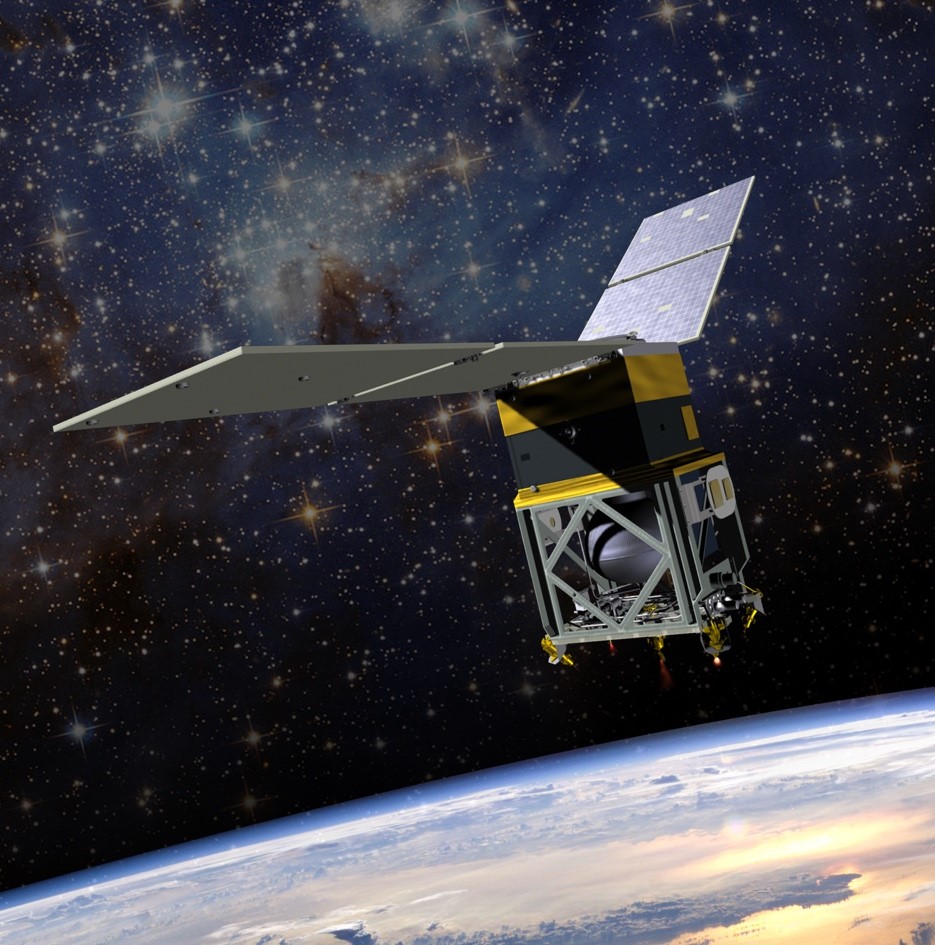Description

Disclaimer: Copyright infringement not intended.
Context
A Green Propulsion System, developed under the Technology Development Fund (TDF) scheme of DRDO, has successfully demonstrated in-orbit functionality on a payload launched by PSLV C-58 mission.
Details
- The project, known as "1N Class Green Monopropellant thruster for altitude control and orbit keeping of micro satellite," was entrusted to Bellatrix Aerospace Pvt Ltd, a Bengaluru-based start-up, serving as the development agency.
Key Achievements
- Telemetry Data Validation: The Telemetry Data from the PSLV Orbital Experimental Module (POEM) at the ISRO Telemetry, Tracking and Command Network (ISTRAC) in Bengaluru has undergone rigorous validation against ground-level solutions. The system has not only met but surpassed all performance parameters.
- Non-Toxic and Environment-Friendly: The Green Propulsion System is a groundbreaking technology that provides a non-toxic and environmentally friendly propulsion system suitable for low orbit space missions.
- Indigenous Components: The system comprises various indigenously-developed components, including Propellant, Fill and Drain Valves, Latch Valve, Solenoid Valve, Catalyst Bed, Drive Electronics, among others.
- Ideal for High Thrust Requirements: This innovation is deemed ideal for space missions with high thrust requirements, showcasing versatility in addressing the diverse needs of space exploration.
Technology Development Fund (TDF)
- The TDF is a flagship programme of the Ministry of Defence, spearheaded by DRDO, aligning with the 'Make in India' initiative.
- This program focuses on funding innovation in defence and aerospace, with a particular emphasis on supporting start-ups and Micro, Small & Medium Enterprises (MSMEs).
- The success of the Green Propulsion System further underscores the effectiveness of such initiatives in pushing the boundaries of technological advancements in the realm of space defence.
Understanding Propulsion Technology
- Propulsion Technology refers to the means by which an object is propelled or driven forward.
- In the context of rockets and airplanes, propulsion is achieved through the application of Newton’s third law, stating that for every action, there is an equal and opposite reaction.
- In essence, a working fluid or gas is used to accelerate the engine, providing the necessary thrust for movement.

Green Propulsion Technology by ISRO:
- The Indian Space Research Organisation (ISRO) embarked on the development of Green Propulsion Technology in 2018, aiming to create environmentally friendly alternatives for propellants.
- Key milestones in ISRO's Green Propulsion endeavors include:
- Eco-Friendly Solid Propellant: ISRO developed an eco-friendly solid propellant consisting of Glycidyl Azide polymer (GAP) as fuel and Ammonium Di-Nitramide as the oxidizer in 2018.
- Testing Various Combinations: ISRO engaged in technology demonstration projects involving green propellant combinations, such as kerosene, Hydrogen Peroxide, Liquid Oxygen, AND-Glycerol-water, AND-Methanol-water.
- Liquid Oxygen and Hydrogen Propulsion Systems: ISRO initiated testing of propulsion systems based on Liquid Oxygen and Liquid Hydrogen for launch vehicles, expanding the scope of green propulsion technologies.
- ISORENE Development: ISRO introduced ISORENE, a rocket-grade version of kerosene, as an alternative to conventional Hydrazine rocket fuel.
- Electric Propulsion System: ISRO successfully demonstrated the Electric Propulsion system in the South Asia Satellite (GSAT-9) launched in May 2017. This technology offers enhanced efficiency and control.
Types of Propulsion Systems in Satellites:
Chemical Propulsion
- Bi-Propellant Systems:
- Utilize two separate propellants that combine in a combustion chamber.
- Common propellant combinations include liquid oxygen (LOX) and hydrazine.
- Mono-Propellant Systems:
- Use a single propellant that decomposes exothermically to produce thrust.
- Hydrogen peroxide is a common choice for mono-propellant systems.
Electric Propulsion
- Ion Thrusters:
- Expel ions at high speeds using electric or magnetic fields.
- Ideal for long-duration missions due to high specific impulse.
- Hall Effect Thrusters:
- Accelerate plasma using magnetic fields.
- Balances thrust and efficiency, suitable for station-keeping and orbit adjustments.
Green Propulsion
- Water Electrolysis Propulsion:
- Utilizes water as a propellant, separating it into hydrogen and oxygen through electrolysis.
- Environmentally friendly and suitable for small satellites.
- Green Mono-Propellants:
- Focuses on developing non-toxic, environmentally friendly mono-propellants.
- Aims to reduce the environmental impact of satellite propulsion.
Applications of Propulsion Systems in Satellites:
- Orbit Insertion: Chemical propulsion is commonly used during launch to insert satellites into their designated orbits.
- Station-Keeping: Electric propulsion systems help satellites maintain their positions in geostationary or other orbits.
- Collision Avoidance: Propulsion systems enable satellites to adjust their orbits to avoid collisions with space debris or other satellites.
- End-of-Life Maneuvers: Satellites use propulsion systems to deorbit and perform end-of-life maneuvers to reduce space debris.

Conclusion
Propulsion systems are integral to the success of satellite missions, ensuring precise maneuvers and extending their operational life. As technology advances, the satellite industry continues to explore innovative propulsion solutions to meet the growing demands of space exploration, satellite communications, and Earth observation.
MUST READ ARTICLES:
PSLV C58:
https://www.iasgyan.in/daily-current-affairs/x-ray-polarimeter-satellite#:~:text=Investigating%20X%2DRay%20Polarization%3A%20XPoSat,of%20bright%20X%2Dray%20sources.
https://www.iasgyan.in/daily-current-affairs/technology-development-fund-scheme#:~:text=Technology%20development%20fund%20that%20was,generate%20new%20products%20or%20services.
https://www.iasgyan.in/daily-current-affairs/drdo#:~:text=DRDO%20operates%20through%2052%20laboratories,control%20systems%2C%20and%20missile%20systems.
|
PRACTICE QUESTION
Q. Propulsion systems are integral to the success of satellite missions, ensuring precise maneuvers and extending their operational life. In this context, discuss the significance of Green Propulsion System developed by DRDO. (250 Words)
|
















